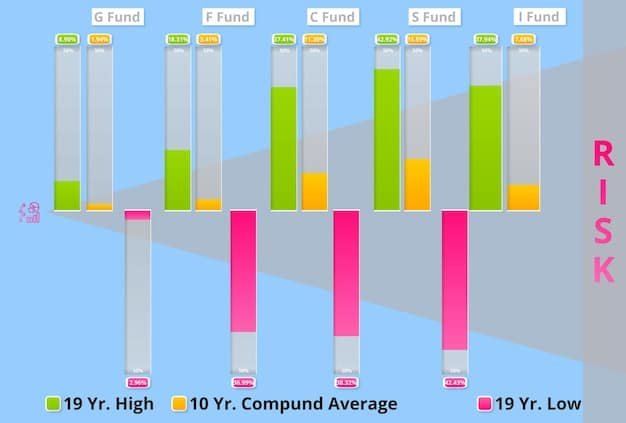The Impact of 2025 Inflation on Your US Savings Account

The Impact of 2025 Inflation Rates on US Savings Accounts is expected to erode the real value of savings, potentially leading to reduced purchasing power if interest rates do not keep pace with the rate of inflation.
Understanding the impact of 2025 inflation rates on US savings accounts is crucial for planning your financial future; inflation can erode the value of your savings, potentially leaving you with less purchasing power than you anticipated.
What is Inflation and How Does It Impact Savings?
Inflation is the rate at which the general level of prices for goods and services is rising, and subsequently, purchasing power is falling. Understanding how it works is the first step in mitigating its effects on your savings.
For savers, inflation can be a silent wealth killer, eroding the real value of money held in accounts if the interest earned does not outpace the inflation rate.
The Basic Definition of Inflation
Inflation is essentially the decline of purchasing power of a given currency over time. It’s quantified by monitoring the average price change of a basket of goods and services in an economy.
Different Types of Inflation
Several types of inflation exist, including demand-pull inflation (driven by increased demand), cost-push inflation (driven by increased production costs), and built-in inflation (a self-perpetuating cycle of wage and price increases).
- Demand-Pull Inflation: Occurs when demand exceeds supply, leading to higher prices.
- Cost-Push Inflation: Happens when production costs increase, forcing businesses to raise prices.
- Built-In Inflation: A cycle where wages and prices increase in response to each other.
Ultimately, understanding the basics of inflation provides a foundation for understanding its potential impact on savings strategies and financial planning.
Projected Inflation Rates for 2025 in the US
Forecasting inflation rates is not an exact science, but experts provide ranges to help consumers and businesses plan. Understanding these projections is vital.
These projections are based on a variety of economic indicators and expert analysis, influencing financial decision-making related to savings.

Expert Economic Forecasts
Various economic institutions and analysts release their forecasts for future inflation rates. These can differ based on their methodologies and assumptions.
Factors Influencing Inflation Projections
Factors such as monetary policy, global supply chains, geopolitical events, and consumer demand deeply influence inflation projections.
- Monetary Policy: Actions taken by the Federal Reserve to manage the money supply and credit conditions.
- Global Supply Chains: Disruptions in the supply of goods can lead to increased prices.
- Geopolitical Events: Wars or trade disputes can impact inflation rates.
Staying informed about inflation projections—and the factors that influence them—is essential to making informed decisions about US savings accounts and broader financial planning.
Savings Account Interest Rates vs. Inflation
A crucial comparison to make when planning for your financial future is how predicted savings account interest rates stack up against projected inflation.
The goal for every saver is to ensure that their interest earned exceeds the inflation rate, thus growing their wealth in real terms.
Historical Trends
Understanding historical trends in savings account interest rates helps to contextualize the current landscape.
Impact of Inflation on Real Returns
Inflation has a direct impact on the real return of savings accounts. If inflation outpaces interest rates, the real value of savings diminishes.
Keeping a close watch on how interest rates and inflation compare is particularly important when navigating the impact of the impact of 2025 inflation rates on US savings accounts.

Strategies to Protect Savings from Inflation
There are several strategies that savers can employ to protect their money from the erosive effects of inflation.
These include considering high-yield savings accounts, investing in inflation-protected securities, and diversifying investments, all aimed at staying ahead of inflation.
High-Yield Savings Accounts
High-yield savings accounts typically offer interest rates that are more competitive than traditional savings accounts, and can help offset some of the negative impacts of inflation.
Treasury Inflation-Protected Securities (TIPS)
TIPS are designed to protect investors from inflation. The principal of a TIPS increases with inflation and decreases with deflation.
Choosing a safe harbor for your funds can have a major impact; consider the various strategies to protect savings from the impact of the impact of 2025 inflation rates on US savings accounts.
Alternative Investment Options
Beyond traditional savings accounts, there are various alternative investment options that may provide better protection against inflation.
These investments often have higher potential returns but also come with varying levels of risk, requiring careful consideration and due diligence.
Real Estate
Real estate can be a hedge against inflation as property values and rental incomes often rise during inflationary periods.
Commodities
Commodities, such as gold and oil, are sometimes viewed as inflation hedges. Their prices tend to increase during periods of high inflation.
- Real Estate: Property values tend to rise with inflation, offering a hedge against currency devaluation.
- Commodities: Gold and oil are often considered safe-haven assets during inflation.
- Stocks: Some stocks can outpace inflation, particularly those in sectors that benefit from rising prices.
Savers must carefully evaluate these investment options in light of their individual risk tolerance and financial objectives when facing the reality of the impact of 2025 inflation rates on US savings accounts.
Long-Term Financial Planning in an Inflationary Environment
Inflation must be a key consideration in long-term financial planning, affecting everything from retirement savings to investment strategies。
Adjusting financial strategies to account for inflation helps ensure long-term financial stability and the maintenance of purchasing power.
Adjusting Retirement Savings
When planning for retirement, it’s essential to factor in inflation to ensure that savings will cover future expenses.
Rebalancing Investment Strategies
Regularly rebalancing investment portfolios can help maintain a desired asset allocation and protect against inflation’s effects.
- Adjust Savings Goals: Increase savings to outpace inflation and meet future expenses.
- Diversify Investments: Spread investments across various asset classes to mitigate inflation risk.
- Seek Professional Advice: Consult a financial advisor to develop a tailored inflation-adjusted plan.
Effectively addressing inflation’s long-term impacts on your investments is essential for weathering the impact of 2025 inflation rates on US savings accounts.
| Key Point | Brief Description |
|---|---|
| 💰 Inflation Impact | Inflation erodes savings value if interest rates don’t keep up. |
| 📈 Rate Forecasts | Experts offer various projections for 2025 due to influencing factors. |
| 🛡️ Savings Strategies | Consider high-yield accounts, TIPS, and diversify investments. |
| 🏘️ Alternative Investments | Explore real estate, commodities, and stocks for inflation protection. |
Frequently Asked Questions
▼
Inflation reduces the purchasing power of your savings. If your savings account’s interest rate is lower than the inflation rate, the real value of your savings decreases over time.
▼
Treasury Inflation-Protected Securities (TIPS) are a type of bond whose principal is indexed to inflation. They increase with inflation and decrease with deflation, protecting your investment.
▼
Both stocks and bonds react differently to inflation. Stocks may offer better returns during inflationary periods, but bonds, especially TIPS, can provide a hedge against inflation risks.
▼
Rebalancing should be done regularly, typically annually or semi-annually, to maintain your desired asset allocation and protect portfolio performance against inflation’s effects on various asset classes.
▼
Yes, real estate is often considered a good hedge against inflation. Property values and rental income tend to increase during inflationary periods, providing a return that can outpace inflation.
Conclusion
Understanding and preparing for the impact of 2025 inflation rates on US savings accounts is essential for preserving your financial security. By staying informed, employing strategic savings and investment approaches, and continuously adapting to changing economic conditions, you can safeguard your wealth and maintain your purchasing power in an inflationary environment.





